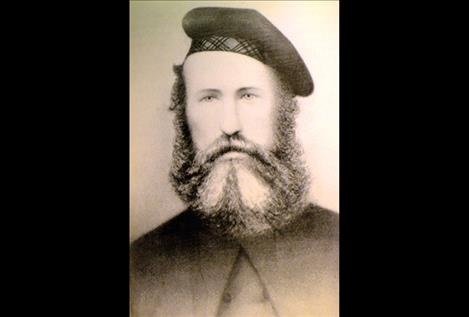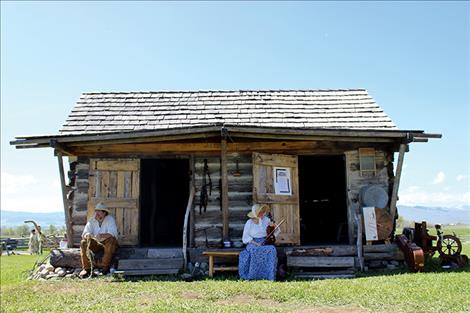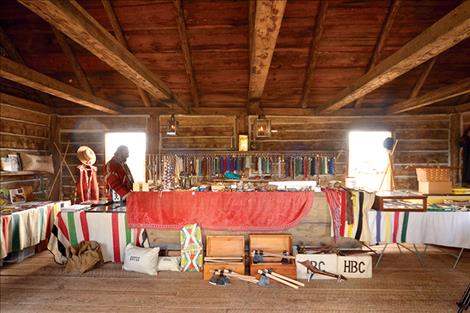Celebrating two centuries since legend was born
Hey savvy news reader! Thanks for choosing local.
You are now reading
1 of 3 free articles.
Angus McDonald almost didn’t make it. It was 1839 in the rugged wilderness. He was in a boat full of people traveling on the Columbia River about to go through whitewater rapids.
“Everything was prepared to run them,” he stated in the Washington Historical Quarterly. “Men belted tightly with their coats off. Michel, or in English Michael, wound a twisted silk kerchief round his head to keep his sweeping coils of hair from blinding him.”
With 8-foot long paddles, the crew turned the boat into the current and began to row. “ … within fifty yards of us roared and heaved and coiled the very whirls wherein the Wallace party with their priests were swallowed.”
The crew continued to row, trying to get the boat and three families through the rapids, but the nervous people were right to worry. “ … plunging and glancing like a pursuing eagle down the headlong leap we landed right in the throat of death’s whirlpool and the boat filled and became helpless.”
Michel sat silently with his oars, in fear like a marble statute. The powerful blacksmith began to weep and pray. Angus seized a kettle from inside the boat and began pouring a large weight of water overboard and yelled out to Michel.
“He looked at me as if a thrill of lightning passed through his brain.”
Startled into action, the crew began rowing through the whirlpool.
“Every sinew found then and there its use and she was rowed by strange luck to the beach.”
Angus stood safely on land and it hit him that he almost died, but it wasn’t his time that day. He would live to the age of 73, and 200 years after he was born, people are gathering to celebrate his life at a fur-trading post Angus named Fort Connah.
The bearded Scotsman was born in 1816. He grew up in Loch Torridon, Ross-Shire, Scotland among farmers. He spoke English and Gaelic and was well educated. He often wrote epic poems and one is thought to be a eulogy he wrote about himself: “In heft two hundred twenty pounds and ten/ And in his socks stood six feet full at height/ A cranium domed in shape towering up/ A highland peak with dark brown locks o’er hung/ In gentle wavelets down his mane and neck.”
In “Angus McDonald of the Great Divide,” Steve A. Anderson wrote that at the age of 22 Angus packed his bagpipes and the works of William Shakespeare and set sail from his homeland for North America to start a career in the fur trade. His great-grandson Joe McDonald said people making a living in the wild had skills in other areas that didn’t often include reading and writing.
“He wasn’t an ordinary mountain man,” Joe said.
Angus worked for several years in the fur-trading business with his uncle, and for the adventure seeker, life started to get a bit dull, Anderson wrote, so Angus decided to learn more about indigenous people. He became fascinated by their culture and beliefs. He developed friendships with many Indians. The Salish would call him “Oops-chin” or “Whiskers” for his long beard, according to Anderson. Angus would also join in a ritualistic dance with Chief Victor’s people to prepare for battle with a warring tribe. “Once mounted on his best ‘buffalo charger’ he paraded in unison with other warriors, danced, meditated and sang the night out with the Flathead,” Anderson stated. “As morning broke, McDonald was off to war against the Blackfeet – packing only his knife and rifled musket.”
Angus and the chief became close friends.
“Chief Victor wanted his war horse given to Angus as a gift,” said Wyman Mc-Donald, great-grandson to Angus. “It was the chief ’s dying wish, and it was considered a great honor.”
During that time, he continued his work with the fur-trading company and was eventually promoted to head of operations over several forts spread across the northern territory including Walla Walla, Boise, Connah, Hall and Kootenai. Angus would trade furs for goods with many Indian people and he learned several languages.
He met his wife Catherine Baptiste Rascale of the Nez Perce Eagle from the Light Clan near Fort Hall, Wyman said. They eventually moved to Fort Connah and developed it as a major trading post.
“It was big business back then,” Joe McDonald said of fur-trading. He described his grandfather as being in charge of a thriving trading post where pack horses were used to move thousands of furs north. Some of the furs traveled by ship to England. The pack horses would return with goods to trade with people for more furs.
Angus had 12 children in his lifetime. His son Duncan McDonald would take over Fort Connah. The United States and Canada worked out a territory agreement and Fort Connah ended up being part of the U.S. so it was later closed.
He was almost 60 and he wasn’t finished with his adventures. He developed a ranch near Fort Connah, although he didn’t own the land.
“The Pend d’Oreille let him ranch there,” he said. Joe remembers hearing stories about his grandfather’s 1889 death but he isn’t sure if the stories are true. It was said that his grandfather wasn’t well after sustaining injuries from a horse riding accident. He was ill for maybe a year before he died. Angus was buried in a cemetery at Fort Connah. One of the peaks in the Mission Mountains was named after him, as was McDonald Lake. Lake McDonald in Glacier National Park was named after his son Duncan.
The 200th Birthday Celebration for Angus is scheduled for Sept. 10-14 at Fort Connah with bagpipe music, food, and birthday cake planned.


















